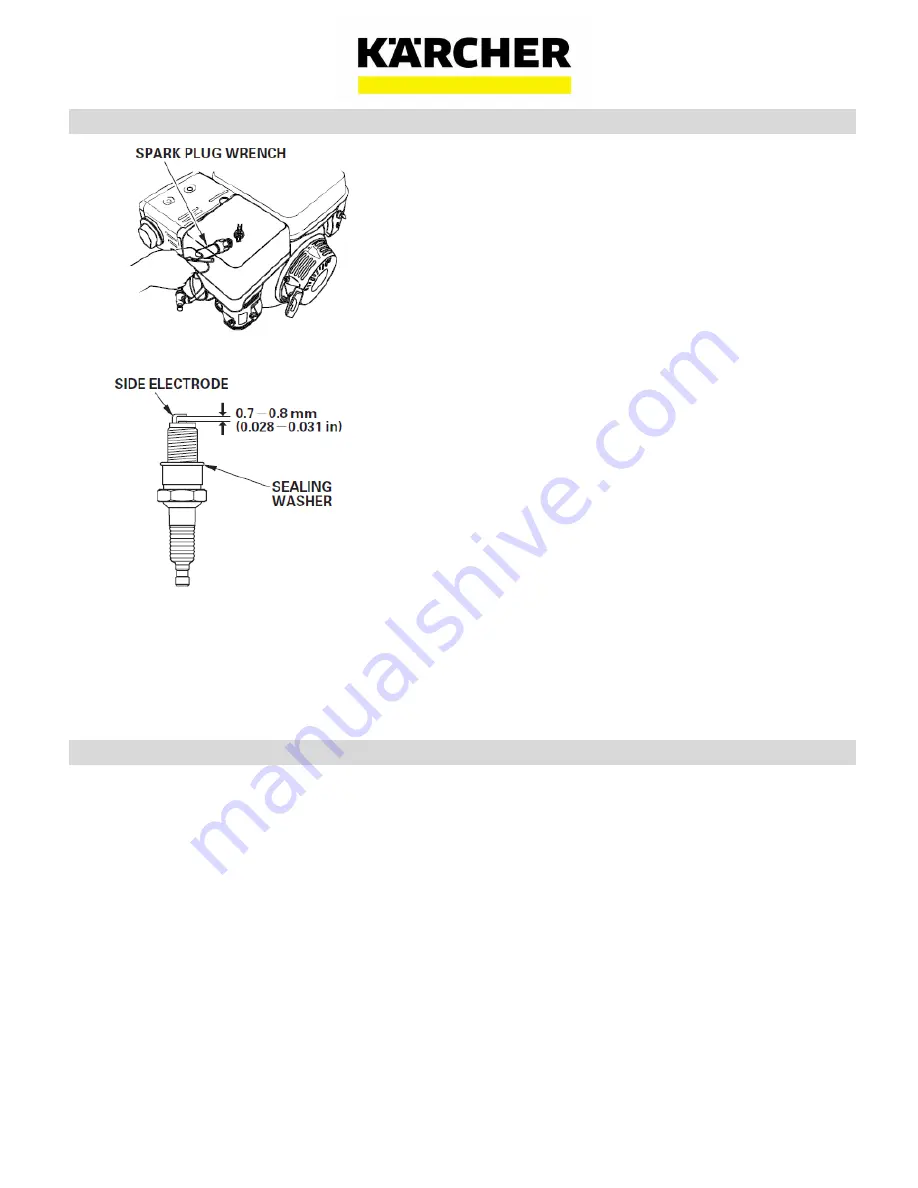
English
9.808-136.0 Rev. 00 (09/18)
25
The recommended spark plug has the correct heat
range for normal engine opera ng temperatures. An incorrect
spark plug can cause engine damage.
If the engine has been running, let it cool before servicing the
spark plug.
For good performance, the spark plug must be properly
gapped and free of deposits.
1. Disconnect the spark plug cap, and remove any dirt from
around the spark plug area.
2. Remove the spark plug.
3. Visually inspect the spark plug. Replace it if damaged or
badly fouled, if the sealing washer is in poor condi on, or
if the electrode is worn.
4. Measure the spark plug electrode gap with a wire-type
feeler gauge. Correct the gap, if necessary, by carefully
bending the side electrode.
5. Install the spark plug carefully, by hand, to avoid cross
threading.
6. A?er the spark plug is seated, ghten to compress the
sealing washer. Tighten 1/8—1/4 turn a?er the spark plug
seats to compress the washer. Note: A loose spark plug
can overheat and damage the engine. Over ghtening the
spark plug can damage the threads in the cylinder head.
7. A"ach the spark plug cap to the spark plug.
6.4.8
Checking / adjus$ng spark plug
6.4.9
Changing spark plug
1. Disconnect the spark plug cap, and remove any dirt from
around the spark plug area.
2. Remove the spark plug.
3. Measure the new spark plug’s electrode gap with a wire-
type feeler gauge. Correct the gap, if necessary, by care-
fully bending the side electrode.
4. Install the spark plug carefully, by hand, to avoid cross
threading.
5. A?er the spark plug is seated, ghten to compress the
sealing washer. Tighten 1/2 turn a?er the spark plug seats
to compress the washer. Note: A loose spark plug can
overheat and damage the engine. Over ghtening the
spark plug can damage the threads in the cylinder head.
6. A"ach the spark plug cap to the spark plug.








































